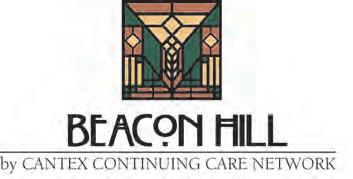TEXOMA AREA
MARCH/APRIL 2024

WOMEN’S HISTORY MONTH A HISTORICAL CELEBRATION FALL PREVENTION AVOIDING SEVERE HEALTH RAMIFICATIONS
RECOVERING FROM IDENTITY THEFT

TEXOMA AREA
MARCH/APRIL 2024

WOMEN’S HISTORY MONTH A HISTORICAL CELEBRATION FALL PREVENTION AVOIDING SEVERE HEALTH RAMIFICATIONS
RECOVERING FROM IDENTITY THEFT
Family, Friends & Fame


Pain
Orthopedic Surgery • Neurosurgery • Minimally Invasive Spine Surgery
Total Joint Surgery • Foot & Ankle Surgery • Hand Surgery
Gynecological Surgery • Plastic Surgery



Dr. Courtney is a board-certified orthopedic spine surgeon located in Plano, Texas. A Louisiana native, he attended Louisiana State University for medical school, and completed residency at Texas A&M followed by a fellowship at the Florida Neck and Back Institute.
SPECIALTIES:
• Back Pain
• Neck Pain
• Spine Pain
• Disc Replacement
• Microdiscectomy
• Spinal Fusion
• Minimally Invasive Surgery
• Steroid Injections
• Physical Therapy
“I believe in treating each of my patients with honesty, dignity, and respect. My patients come away from our shared interactions feeling confident, assured that they are truly in the best hands. Throughout my career, I have remained laser-focused on providing world-class care and innovation to the patients I treat on a daily basis. I look forward to getting to know you!”








In this edition of LIVING WELL Magazine, we take a moment to celebrate the stories of empowerment, resilience, and the ongoing journey towards a more informed and balanced life.

Our cover story on Emily Blunt offers a deep dive into the life of an actress whose roles and personal endeavors transcend the boundaries of Hollywood, showcasing a commitment to versatility, strength, and compassion that resonates with many of us. Blunt’s narrative is not just about her cinematic achievements but also her role as a voice in the industry, advocating for diversity and women’s rights, reflcting the multifaceted challenges and triumphs faced by women today.
Ths issue also honors Women’s History Month, a time to reflct on the strides made in the fiht for equality and to recommit ourselves to the ongoing battle against the erosion of women’s rights. We explore the legacies of the pioneers of women’s equality, whose courage and determination have paved the way for the freedoms we enjoy today. Their stories remind us of the importance of perseverance and the impact of collective action in challenging the status quo and pushing forward towards a more equitable society.
Moreover, in an era where our digital identities are as crucial as our physical ones, the menace of identity theftlooms large, affecting millions of lives each year. Our comprehensive guide on recovering from identity theftis more than just advice—it is a roadmap to regaining control and securing one’s identity in the digital age. Ths piece is essential reading for anyone looking to protect themselves and their loved ones from this pervasive and often devastating crime.
As we navigate these stories and themes, our aim is to offer insights that enrich, inform, and inspire. Whether it’s through the lens of a celebrated actress, the historical achievements of women’s rights advocates, or the practical guidance for safeguarding our digital lives, we hope to provide you with content that enhances your journey to living well.
Happy reading!

PRESIDENT & CEO
SAM HOUSTON
VICE PRESIDENT & CFO SPRING HOUSTON
EDITOR, FEATURE WRITER & SOCIAL MEDIA
SONDRA BARR
ART DIRECTOR
VANESSA FRYER
ACCOUNTS MANAGER JENNIFER BEAVERS
WEBSITE LYDIA ROGERS
ADVERTISING & SALES
TEXAS: Denton County, Dallas County, Collin County
TEXAS & OKLAHOMA: Texoma Area
WRITE TO US:
Tell us who you would like to see featured on the cover, or what subjects you would like covered in upcoming editions of LIVING WELL MAGAZINE at info@livingwellmag.com
SUBSCRIPTIONS & CUSTOMER INQUIRIES
Houstons of Dallas Publishing, Inc. 102 E. Broadway, #901 Prosper, TX 75078
www.LivingWellmag.com
Phone: (214) 507-1000 Fax: (855) 248-2132
LIVING WELL MAGAZINE is a source for quality educational articles on living a healthy, vibrant life. Our focus is on connecting our readers with the latest information on a host of topics relevant to their evolving life. From cutting edge medical news and procedures to top-tier financial, legal and lifestyle information. Connecting readers to leading medical and business professionals in their community in Texas and Oklahoma.
MARCH/APRIL 2024 All advertisements in this Magazine are placed by third parties. We do not control or endorse either the advertisements or their content. Further, we do not
refers to the name of this Magazine, and all versions of Living Well Magazine as well as Houstons of Dallas Publishing, Inc.





With a clear focus on quality, reliability and timely completion, Plyler Construction works with owners of such diverse commercial, institutional and industrial projects as manufacturing, warehousing, educational, retail, support and religious facilities to provide the most appropriate delivery method. Plyler offers pre-construction services, experienced construction management, a variety of delivery methods, equipment setting and in-plant maintenance services.
We work with our clients, not just for them. That’s just one of the reasons architects, designers, and industrial and commercial project owners from across the nation have looked to Plyler Construction for more than a half-century for solutions to their building needs. At Plyler Construction, we build relationships.
General Construction
Pre-Construction
Design-Build Capabilities
Construction Management
MEP
Mechanical
Electrical
Plumbing
HVAC
Equipment Setting
Steel
Steel Fabrication
Steel Erection
Specialty Fabrication



Experience the sheer joy of hearing sound in its most natural form, all day, every day.
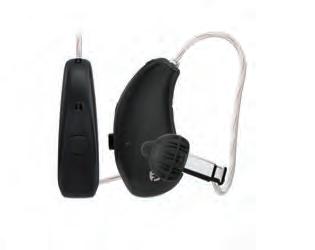
• Sound connects us to the places we go & the people we’re with.
• It’s full of sensory info that we use to make sense of our world.
• Even when listening through a hearing aid, the sound should be as natural & unchanged as possible.
2-Week Free In-Home Trial $500 Off a set of premium digital hearing instruments. Some restrictions apply.
It’s worth your time. It’s about your life. Expertise • Integrity • Good Humor • Compassion


“ We’re passionate about great sound! We’re a family business, driven by a deep sense of responsibility to our clients and their families. We understand that you expect transparency, personalization, and convenience. Give us a call. We want you to enjoy the benefits new technology can bring to your life. We want you to hear well again. ”



In Hollywood, where stars are born and legends are made, actress Emily Blunt stands out as something of a rarity. Unlike many of her contemporaries, she navigates the demanding, churning waters of stardom with grace and authenticity.
Raised in southwest London, Blunt’s early life was marked by a struggle that shaped her future in ways she never imagined. As a child, she had a prominent studder, a challenge that could have silenced her. Instead, it became one of her greatest teachers, instilling in her a resilience and empathy that has come to defie her both as a person and an actress.
“My stutter really started to take hold around 6 or 7 and then kind of got progressively more challenging for me, and as I reached about 11 or 12, it was pretty ingrained,” she explained in a heart-to-heart with 11-year-old Sammy Blatstein, the son of former Marie Claire Editor-in-Chief Anne Fulenwider. Blatstein, who also studders, interviewed the actress about the condition for an article in Marie Claire
“School was interesting because there were certain things I couldn’t do and wanted to, like read out my poem in class. I would never want to do that. I would hate it if the teacher called on me to answer something,” explained Blunt to Blatstein.
“I was a smart kid, and had a lot to say, but I just couldn’t say it. It would just haunt me. I never thought I’d be able to sit and talk to someone like I’m talking to you right now,” Blunt told W magazine in 2008.
It was this very struggle that inadvertently opened the door to her acting career, transforming a perceived weakness into her greatest asset. Although her parents took her to speech and relaxing coaches, her stutter persisted. The turning point came when a teacher suggested she try acting in a school play, not in her own voice, but in an accent. Ths method helped her manage her stutter, revealing not only a hidden talent but also a passion for performing. Acting became a space where she could articulate freely and embrace a range of emotions and characters without the constraints of her stutter.
While she had no fim intention of pursuing acting as a career path, destiny had its script written for Blunt. At the age of 18, following an audition that would pivot her life’s direction, she found herself sharing the stage with the legendary Judi Dench in a 2001 West End production of The Royal Family
“I was completely wowed and starstruck by the whole thing,” Blunt said during an interview for Harper’s Bazaar. “I remember being in Judi’s dressing-room every night and thinking, my God, Pierce Brosnan is here—this is crazy!”
Her immersion into the world of theatre was both enchanting and surreal, a sentiment she echoed in a candid reflction to Vanity Fair, “I was drinking champagne and pretending I knew what anyone was talking about.”
Ths early exposure to the realms of professional acting and the intoxicating allure of the stage set the foundation for Blunt’s burgeoning career. Transitioning from theatre to film, she soon found herself in front of the camera, embarking on a path that would introduce her to a global audience. Her early roles in films like My Summer of Love (2004) showcased her ability to convey complex emotions and create compelling, multifaceted characters, earning her critical acclaim and signaling her as a talent to watch.
“
” I was a smart kid, and had a lot to say, but I just couldn’t say it. It would just haunt me. I never thought I’d be able to sit and talk to someone like I’m talking to you right now.
It was, however, her role as Emily Charlton in The Devil Wears Prada (2006) that catapulted Blunt into Hollywood stardom. Opposite Meryl Streep and Anne Hathaway, Blunt delivered a performance that was both hilariously sharp and poignantly vulnerable. Ths role not only solidifid her status as a versatile actress capable of navigating the intricacies of both drama and comedy but also demonstrated her scene-stealing presence on screen.
From there, Blunt’s career trajectory soared, leading her to a series of roles that would further cement her place in Hollywood. In Edge of Tomorrow (2014), she showcased her physicality and strength alongside Tom Cruise, while her portrayal of the titular character in Mary Poppins Returns (2018) brought a beloved classic back to life with grace, warmth, and a modern twist.
One of her most recent projects, Oppenheimer, directed by the acclaimed Christopher Nolan, presents Blunt in yet another challenging role that highlights her versatility and dedication to her craft.In this historical drama, she delves into the complex world of Kitty Oppenheimer, the wife of J. Robert Oppenheimer, the theoretical physicist known as the “father of the atomic bomb.” Blunt’s portrayal explored the emotional and psychological nuances of a woman caught in the tumultuous times of World War II, shedding light on the personal struggles behind historical figues.
“She wasn’t an easy woman—she defintely didn’t conform to the 1950s housewife ideal, and yet she found herself confied to an ironing board in New Mexico’s Los Alamos, which must have driven her mad,” Blunt revealed to Harper’s Bazaar. “Even now, I see women in their 70s whose whole identity has been caught up in motherhood, and then once that’s done, there’s this sense of, well, who am I and how do I reclaim myself?”
Off-creen, Blunt challenges the conventional expectations of her roles. Seamlessly blending motherhood with her duties as a wife, she navigates her personal life with the same grace and complexity she brings to her characters. Married to actor and director John Krasinski, their relationship is often celebrated as one of Hollywood’s most endearing love stories. The couple, who share two daughters, Hazel and Violet, appear to navigate the complexities of Hollywood well.
Blunt has openly shared the swiftand undeniable connection she felt with Krasinski, saying she knew “disarmingly soon” that he was the one. “We were discussing how much I was enjoying being single. And then [my friend] goes, ‘Oh, my God, there’s my friend John.’ And that was it,” she recounted to People. “We were engaged within 10 months, but I think we probably knew before that.”
Ths bond between Blunt and Krasinski is evident in their professional lives as well, most notably through their collaboration in the critically acclaimed horror film A Quiet Place and its sequel, where their incredible chemistry and teamwork was on full display.
As a mother and wife, Blunt places value on family time, adhering to a strict personal rule to never be away from her daughters for more than two weeks. “Because even though they’re hardy, and they’re used to this strange life, it’s still rough on them when I have to go away,” she admitted to Harper’s Bazaar, highlighting the emotional toll her career can sometimes take on her family.
Blunt is aware of her privileged position to be able to prioritize her family in a profession that is not always accommodating to women’s personal lives. She candidly shares her apprehensions about the acting world, especially for young women. “My toes curl when people tell me, ‘My daughter wants to be an actress.’ I want to say, don’t do it!” she’s said in interviews.
Despite her reservations about the challenges of acting, especially for women, Blunt herself has navigated these waters with remarkable success and she shows no signs of slowing down. She’s starring alongside Ryan Gosling in The Fall Guy. Additionally, Blunt is reprising her role in Jungle Cruise 2 with Dwayne “ The Rock” Johnson, a sequel eagerly anticipated by fans of their infectious on-screen chemistry. The duo is also slated to headline Netfli’s Ball and Chain, playing a superhero couple.
She also fids time to be an advocate for the American Institute for Stuttering (AIS), a cause close to her heart given her own experiences with stuttering. Her work with AIS reflcts her desire to use her platform for positive impact, helping to destigmatize stuttering and support others who face similar challenges. Though public speaking, fundraising, and raising awareness, Blunt has contributed signifiantly to the organization’s mission, demonstrating that her contributions to society extend beyond fame and family.









Arvie is an 85 year old widow in good health. She delights in her two adult children who also enjoy a good relationship. Her Will was drafted over a decade ago. She owns a house (debt free) and about $150,000 in cash. She has a long term care insurance policy in case she needs nursing home care. She wonders if she needs a power of attorney and a medical directive, so she schedules an appointment with an Elder Law attorney.
At the appointment, her attorney reviews her Will and explains that it leaves her estate equally to her two children, appointing them as Executors. He explains the Probate process and agrees that she, along with virtually everyone else in Texas, needs a Statutory Durable Power of Attorney, a Medical Power of Attorney and a Directive to Physicians.
Her attorney counsels that a Statutory Durable Power of Attorney is a document that simply authorizes her children, as her agents, to manage her property for her benefit in the event that she becomes incapacitated and unable to handle her affirs. Her children would be able to pay her bills and take care of her property if she were alive but mentally incapacitated. She asks why she needs a Power of Attorney when she has already appointed an Executor. He explains that the Executor is powerless until appointed by the Probate Court after her death in contrast to the Power of Attorney, which is applicable for the rest of her life. Without a Power of Attorney, her children would be required to initiate a much more expensive, court supervised Guardianship in order to manage her estate and pay her bills if she became mentally incapacitated.
The attorney says a Medical Power of Attorney is different because it applies only to health care decisions, allowing her children to make general health care decisions for her benefit if she is unable to make decisions. He explains that the last document is called a Directive to Physicians and is sometimes referred to as a Living Will because it
allows her to express her wish not to be kept alive by artifical means if she ever becomes so ill that there is no hope of recovery.
Then the attorney starts to creatively add value to the meeting. He asks Arvie if she would like to plan her estate so that her children won’t have to go through the probate process. She tells him that she has heard about avoiding probate by using a Revocable Living Trust but that she thinks her estate is too small to justify a Trust. She is surprised to learn that she can avoid Probate without using a Trust.
Because Arvie has a relatively simple estate and, very importantly, because Arvie has two trustworthy children that enjoy a close relationship, her estate can be planned to avoid the expense, delay and public disclosure of probate without using a Living Trust.
Her attorney recommends that she deed her house to her children but reserve the right to live in the house for the rest of her life, known as a Life Estate Deed. For Federal Income Tax purposes, her children would receive a step up in cost basis in her house to fair market value in the event they choose to sell it after her death. Also, her property taxes would remain frozen because she is over the age of 65 and because the house would remain her homestead. Best of all, her house would instantly pass to her children upon her death with no need for a probate.
She added her children to her bank accounts and converted the accounts to be held as “joint tenants with right of survivorship”, meaning she retains ownership of the accounts but that they would instantly pass to her children upon her death without the need for a probate. Finally, her children could simply divide up her personal property, donate it to charity or sell it as they see fit. By taking these actions, Arvie’s children will be able to settle her estate without the expense of probating her Will.
Arvie was glad she went to see her lawyer about a power of attorney because she left hs officeith a whole lot more than she expected.






“No matter what your heartache may be, laughing helps you forget it for a few seconds.” — Red Skelton
It’s okay to feel joy when grieving. It’s okay to not be sad and to cry every moment of the day. In fact, laughter can be part of your healing. Laughter is indeed medicinal during grief. The physical sensation of a good belly laugh can unclench the tightness in your stomach, alleviate a sob-induced headache, and relieve the pressure on your face. That relief might add to the guilt, a societal pressure that you should be holding tight to the pain to show you are mourning.
What right do you have to laugh after your loved one has passed, and to enjoy that sense of relief from the constant pressure of pain? What will others think of you? The guilt and fear of judgment often hold us back.
Consider these questions: If your person were here right now, what would they say about you feeling guilty? What is there to feel guilty about? What would they say about you not wanting to be happy? What would they say about you not smiling and laughing and carrying on with life?
A regular in the women’s only support group, Linda Blanton, knows the importance of laughter and embraces it in her daily life. “We’re all grieving, but you have to fid something to laugh about. I think one

reason I have this attitude is because of my husband; he was a very happy person. After I fially came to terms with the fact that he was truly gone, I started watching old comedians from the 1950s and ’60s. That helped me to remember him because that was the kind of thing he liked. We do have to continue living after our loved ones are no longer here. I feel we need some joy and happiness in our life.”
It’s likely that your loved one would want you to laugh. They would want you to live. So, shed the guilt, tune into a funny memory, and laugh out loud. Join one of our Grief and Loss Center support groups for help in fiding your laugh again and dealing with loss, call us at (903) 868-9315.

JUST BECAUSE DAYS ARE LIMITED, QUALITY OF LIFE SHOULDN’T BE.
We are your neighborhood hospice helping patients and families find loving care with unparalleled skill. Surprisingly, perhaps, there are still opportunities to experience joy. Governed by community leaders, funded by grants and gifts, we are an award-winning hospice, providing end-of-life care for you and support for those you love. Let us be of assistance during this time when every moment is more precious than ever.




Josh Creel, DC is a chiropractor with Airrosti, a healthcare group that specializes in rapid recovery for soft tissue injuries by utilizing manual therapy—a hands-on treatment used to alleviate pain, improve mobility, and promote overall physical well-being. In nearly all cases, this allows for rapid recovery, complete injury resolution, and lasting results. In-clinic patients should expect to see dramatic improvement after the first visit, and most patients experience complete injury resolution in as few as three visits (based on in-clinic and Remote Recovery patientreported outcomes).
Dr. Creel has been serving the McKinney/Prosper area for 10 years and provides patients with an individualized treatment plan, and uses a variety of techniques, including joint mobilization, soft tissue manipulation, and muscle energy techniques to address specific musculoskeletal issues and promote recovery.
Dr. Creel graduated with honors from Mississippi State University. Soon after, he received his Doctor of Chiropractic degree from Parker University in Dallas, Texas. In Dr. Creel’s free time, he enjoys all types of fitness activities and spending time with his wife and three children. Dr. Creel is an active member of Lighthouse Church in Prosper, TX.
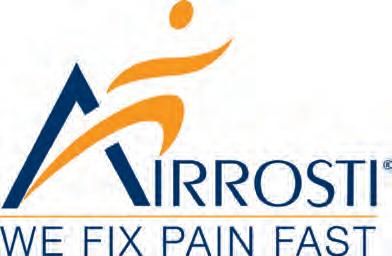


Trips, stumbles, and minor tumbles may not seem like a big deal when you’re younger. But, for seniors, any fall has the potential to result in severe injury or a health crisis. According to the Centers for Disease Control, a senior over the age of 65 falls every second of every day. One in five falls ends in serious injury. So understanding the risk factors that lead to both fatal and nonfatal falls and taking precautions are vital to avoid the potentially debilitating consequences seniors can face.

A variety of factors increase an individual’s likelihood of falling. Usually, it’s a combination of multiple factors that lead to a fall. So being aware of your personal risk factors can help you to minimize dangers.
Factors typically associated with aging.
As you age, there’s a natural degeneration in various bodily functions. This may include:
• A decrease in strength
• Difficulty with balance
• Slowed reaction times and reflexes
• Worsened vision
• Impaired hearing
• Cognitive impairments
Any of these individual issues can cause difficulty walking, going up and down stairs, sitting, standing, or lying down. These problems can also lead to increased fatigue and less awareness of external factors that could potentially contribute to a fall. All of these make falling more likely.
Medical Factors
Aging may lead to higher susceptibility to certain medical conditions that increase your risk of falling. Some examples of health issues associated with fall risk are dementia, osteoporosis, vertigo, depression, COPD, diabetes, arthritis, and disabilities, particularly in the feet or lower limbs. Surgical procedures for medical conditions or injuries can also affect an individual’s mobility, strength, and function. Medications taken for medical conditions can increase the risk of falling because of the side effects that compromise balance. Taking four or more drugs is also associated with falling.
Just one fall can have a signifiant negative impact on a senior’s quality of life. Consider these facts:
• Most fatal injuries occur from falling.
• Ninety-five percent of all hip fractures happen during a fall.
• Falling is the leading cause of traumatic brain injury.
• A fear of falling again is common.
• Seniors who’ve fallen may start avoiding activities that could lead to another fall.
• Injuries from a fall may contribute to an inability to function independently and require care or moving to a nursing home.
• The consequences of falling may increase the risk of depression.
• Medical costs after a fall can be expensive.
Falls are more common in environments with slippery floors, poor lighting, uneven surfaces, stairs, small rugs, and clutter. Many falls occur in the bathroom. Getting in or out of the shower or bath can be particularly hazardous to seniors. Interestingly, however, household and environmental factors aren’t as significant an indicator as health factors.
• The potential for serious or fatal injury from a fall is especially concerning if a person lives alone.
• Senior women are more likely to fall and have serious hip injuries.
• Being less active means more muscle atrophy and an increased likelihood of falling.
• Being overly active can lead to more opportunities to fall and potentially pushing your physical limits.
• A history of previous falls means you have a higher risk of falling again.
• Make sure your prevention strategies address your individual risk factors. List out your personal risk factors, look at which ones can be changed, and create a plan to decrease those risks.
• Stay active at an appropriate level for your health and ability. Try lower intensity workouts like yoga, tai chi, walking, swimming, water aerobics, and weight training, especially for leg muscles.
• Work with a physical therapist to prevent falls or to heal from injury, especially if you have health risk factors. A physical therapist can help you improve balance and build strength while taking into account your individual needs.
• Get regular physical exams to check for any risk factors or problems that could lead to falls. Be honest about any concerns you have and discuss any side effects of your medication.
• Wear well-fitting, comfortable, wide, and flat shoes for a stable base.
• If needed, be sure you actually use devices like canes or walkers for assistance.
• Assess your environment and take steps to make it safer. Consider features like grab bars in the bathroom, secure handrails on stairs, a more accessible tub or shower, and plenty of light. Also, avoid using throw rugs. They can bunch up or catch on your shoes. Remove clutter to keep floors and spaces clear.
• Have a plan in place in case you fall and know what to do and how to get help. If you’re at risk, get a wearable emergency fall device so you can call for medical assistance. New technology is available for automatic fall risk detection. There are also manual devices to push in case of an emergency.
For seniors, falling can be a signifiant concern in trying to stay safe and healthy. But falling isn’t an inevitable part of growing older. By taking these steps to lessen your risk of falling and being prepared in the event of a fall will go a long way toward living a healthy, fulfilling life throughout your retirement.

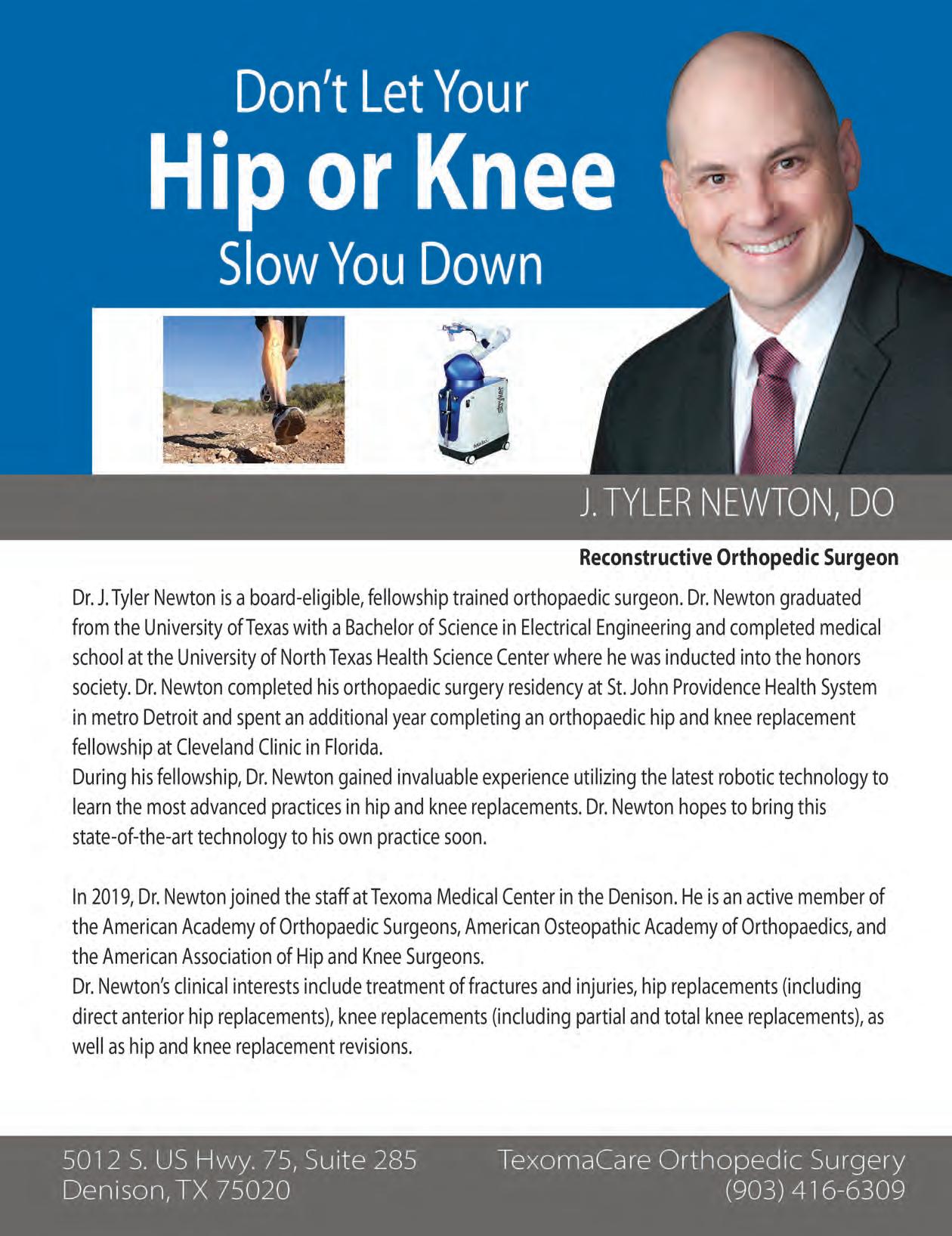 OLIVIA ROGERS , RN, BSN, CHPN, CHPO, MBA, is a leading voice in health care and senior services and the Vice President, Chief Nursing Officer of VNA Texas.
OLIVIA ROGERS , RN, BSN, CHPN, CHPO, MBA, is a leading voice in health care and senior services and the Vice President, Chief Nursing Officer of VNA Texas.
Dear Olivia,
We are considering starting our mother on hospice services sometime soon, as her physician thinks that it might be time to keep her at home and prevent any further hospitalizations. She has been frail for some time now and he feels she may need this extra care and support. How do we know when the time is right? Is there any support available that our family can receive if we need to go out of town to see our grown children while she is on hospice service?
Dear Difficult Decisions,
~Difficult Decisions
It is often a difficult decision to begin hospice services for a loved one, even when we know that may be the best way to provide the appropriate level of care. Skilled hospice care provides comprehensive, holistic care to both the patient and family when someone is facing a terminal illness or condition.
Starting hospice at the right time is important to ensure that the care team has a chance to get to




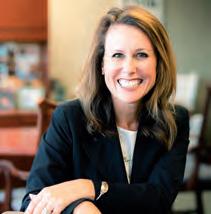

know the patient and family and establish the best plan of care possible. The “right time” to transition someone to hospice is different for every family, but two important considerations are whether further aggressive treatment is desired, and if the patient would want to return to the hospital. If the answer to both questions is no, then this is often the right time to choose hospice care.
In terms of travel, one of the best benefits of hospice for families is a service called respite care. This is one of the levels of care we can provide. This allows a patient to stay in an inpatient setting, such as a nursing facility, for up to five consecutive days for caregiver relief. This means that the family can travel, see other loved ones, or even have a much-needed respite from caregiving, knowing that their loved one is safe and being checked on daily by hospice staff. Hospice really can help families take care of loved ones as they navigate the challenges of end-of-life care.
~Olivia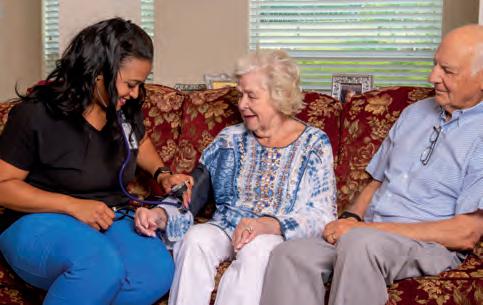
Focuses on quality of life for the patient and family at a time when comfort, compassion and clinical expertise matter most.
To schedule your free in-home informational visit please call (214) 689-0000 or email gethelp@vnatexas.org For volunteer opportunities please call (214) 689-2271 or email volunteer@vnatexas.org

Discussing hospice care can be difficult. Often patients and their families are reluctant to discuss the option of hospice care with the physician when confronted with the diagnosis of a terminal illness, and sometimes, physicians and clinicians do not refer to hospice until the patient is near death and the benefits are lost to the patient and loved ones. Often opening the conversation with your provider on planning for end-of-life options can be so benefical, and these conversations should always include your right to choose the agency you prefer. Also, hospice is a service covered by Medicare, Medicaid, VA benefits and most private insurance companies.
What is hospice care? Hospice is a health service based on a philosophy that you may wish to prepare for death in a safe and supportive environment, usually your own home, but it can be anywhere a person calls home. Hospice provides comfort care and symptom management so that patients enjoy quality of life, rather than pursuing curative measures. Hospice is for those who do not wish to continue to return to the hospital and wish to remain at home.
Hospice services are provided by a team of healthcare professionals who follow a plan of care that is unique to the patient’s diagnosis, wishes, culture and specificneeds. The hospice team is typically comprised of a physician, registered nurse, social worker, home health aide, chaplain, and volunteer. The team works closely with the patient’s primary care physician to continuously re-evaluate services that may be needed. The team assists in all aspects of care for the patient and family. Following death, bereavement care is also available to family and loved ones.
The criteria for hospice is the same, regardless of the payer source— Medicare, Medicaid, or your insurance company: A physician must certify that a patient has a life-limiting illness. The prognosis for living is less than six months if the disease follows its normal progression, but that does not mean the patient can only be on hospice for six months. The physician will re-evaluate the prognosis at certain intervals with home visits to ensure the patient still qualifiesfor hospice. The focus of care is on symptom and comfort measures rather than curative care.
It is important to discuss all options with your practitioner, and they will send an order to the hospice of your choice. Regardless of the agency you choose, under Medicare and Medicaid benefits, patients are eligible to receive all medications related to their hospice diagnosis and including new medications as the disease progresses. Medicare beneficiaries who receive hospice care are also eligible for medical equipment and supplies needed to accommodate their needs such as a hospital bed, special mattress for skin care, wheelchair, bedside commode, oxygen therapy, wound care supplies, etc. During the course of care, there may be a need for additional services that are also covered by Medicare. When you and your family are faced with these difficult decisions, there are so many questions and concerns that need to be addressed. Take time to talk to your physician about hospice care, and the opportunity to spend fial days with the comfort of knowing that you are receiving quality care in your own home, with your loved ones. Understanding your right to choose the agency you want and receiving the full benefits provided to you by Medicare, Medicaid, or other private insurances, can help ensure peace of mind.

 By KIMBERLY BLAKER
By KIMBERLY BLAKER
March is Women’s History Month, so let’s celebrate women’s liberation by remembering the accomplishments of some of history’s most dedicated and resilient women—and honor their memory by taking a stand against the erosion of women’s rights.
Until the emergence of women’s movements, American women were considered inferior to men. Though some inequalities persist still today, they pale in comparison to that of only a century ago. Women were denied the right to vote or obtain an education, unable to work in certain occupations, and couldn’t hold offi. Their rights in the home were severely limited, as well. They couldn’t write wills, sign contracts, obtain loans, and had minimal property rights. Fathers owned their daughters until marriage, at which point their husbands took possession. A multitude of historical events and accomplishments have taken place over the last 150 years. These landmarks have brought American women the freedom we possess today.
The women’s suffrage movement didn’t come into full swing until the mid-1800s. But years earlier, courageous women began carving a path toward independence. In 1792, Mary Wollstonecraft,in her book the Vindication of the Rights of Women, argued, “I do not wish them to have power over men; but over themselves.”
In the early nineteenth century, girls were encouraged to attend elementary school to reduce illiteracy. But those who desired to continue their education were often banned from it. Not until 1837 were women able to attend the same schools as men. In that year, Oberlin College became the fist coeducational institution in the United States by admitting four female students. Still, this was a rare exception for several decades to come, and women’s institutions remained few and far between.
The beginning of the women’s movement began in 1848. That’s when Lucretia Mott and Elizabeth Cady Stanton called a women’s rights convention to be held in Seneca Falls, New York. The purpose was to dis-
cuss “the social, civil, and religious rights of women.” At the convention, a “Declaration of Sentiments and Resolutions,” stating that “all men and women are created equal” and definig the goals of the women’s movement was signed. Over the years, disputes arose among the women’s movement dividing it in 1869 into the more conservative American Woman Suffrage Association (AWSA) and the more radical National Woman Suffrage Association (NWSA).
Susan B. Anthony, of the more radical group, registered and voted in Rochester, New York, in the 1872 presidential election. She was arrested several days later and taken to trial. During that same election, Sojourner Truth was denied the right to vote in Grand Rapids, Michigan, after she demanded a ballot.
Four years later, Elizabeth Cady Stanton, an ally of Anthony, wrote a Declaration and Protest of the Women of the United States and requested to present it at Philadelphia’s centennial celebration. Stanton’s request was denied. But Anthony and four other suffragists, unwilling to hold their silence, boldly rushed to the speaker’s platform and forcefully handed over the document.
Not long after, in 1878, a Woman Suffrage Amendment was introduced to the United States Congress granting women the right to vote. The Nineteenth Amendment, however, would take over 40 years to pass both houses. In 1920, a year following its passage, the Amendment was ratifid, marking a new era for women.
In 1923, the Equal Rights Amendment was proposed. Its purpose: to eliminate gender discrimination. In 1972, nearly 50 years following its proposal, Congress passed the Amendment. It still fell short of three states for ratifiation, and in 1982, was defeated. Its deadline for ratifiation had expired.
Still, the years between saw a signifiant change. In 1936, birth control was ruled legal for preventing pregnancy. The ability of women to

limit their family size began with the introduction of reliable condoms in 1859. It played a crucial role in women gaining equality as they were no longer forced into roles of lifelong child-rearing. In 1960, the FDA approved birth control pills.
Many accomplishments marked the 1960s and 1970s. In 1963, the Equal Pay Act was passed prohibiting discriminatory compensation in federal jobs. The Civil Rights Act, which passed the following year, banned discrimination based on gender and race.
In 1966, the National Organization for Women (NOW) was founded. Its purpose was to promote the Equal Rights Amendment, abortion rights, and childcare for working mothers.
Massive marches marked the next couple of decades with NOW leading the way to women’s reform. One of those marches, in 1973, was to voice outrage over violence against women. Twenty-four years later, the Violence Against Women Act was passed to protect battered women.
Today, feminists are still striving for total equality in areas such as healthcare and equal pay. At the same time, they continue to fiht measures that undermine women’s reproductive rights and protections from domestic violence.
Many women today and throughout history have taken risks to bring us independence. The following are just a few who championed women’s rights.
Susan B. Anthony (1820-1906), co-founder of the National Woman Suffrage Association, dedicated much of her life to the women’s movement. Among other notable actions, she campaigned for women’s suffrage, property rights for married women, and equal wages for female teachers. Anthony coined the phrase, “Men, their rights and nothing more; women, their rights and nothing less.” Ths became the motto of the National Woman Suffrage Association. In 1868, Anthony organized the Working Women’s Association in her campaign to gain better working conditions and fair pay for women. Anthony published The Revolution from 1868 to 1870. She also took part in drafting a proposal on which the Nineteenth Amendment was later based and co-authored the History of Woman Suffrage, 1881 to 1886. In 1904, she founded the International Woman Suffrage Alliance in Berlin, and she also organized the International Council of Women.
Betty Friedan (1921-2006) wrote The Feminine Mystique in 1963, which began the contemporary women’s movement in Britain and the United States. Her book was a challenge to long-held attitudes that woman’s place was in the home. In 1966, she founded the National Organization for Women; in 1971, the National Women’s Political Caucus; and then, in 1973, the First Women’s Bank. Friedan was also an organizer of the 1970 Women’s Strike for Equality. She later authored It Changed My Life (1976) and The Second Stage (1981), both related to the women’s movement.
Alice Paul (1885-1977), of the radical women’s camp, organized a suffrage parade in Washington D.C. in 1913, on the day of Woodrow Wilson’s inauguration. Although violence ensued, it helped the women’s movement to unite. Four years later, the fearless Paul went to jail while picketing the White House along with nearly 100 other suffragists. They were charged with “obstructing traffi” Most of the women were with the National Woman’s Party that Paul had recently founded. Her group also held a hunger strike that year and had to be force-fed. Paul worked unstoppably toward the passage of the Nineteenth Amendment and the Equal Rights Amendment. In 1938, she founded the World Woman’s Party.
Margaret Sanger (1879-1966), a nurse, founded the National Birth Control League in 1917 that would later become the Planned Parenthood Federation of America. Sanger’s commitment toward birth control and reproductive freedom for all women was a result of the horrifying deaths and deformity caused by self-induced abortions she had witnessed. In 1916, she opened the fist birth-control clinic in the United States, in Brooklyn, and she briefly went to prison for it.
Elizabeth Cady Stanton (1815-1902) co-founded the National Woman Suffrage Association and became its fist president. She was outspoken and better known in her day than even Anthony. Stanton went before the New York State legislature in 1855, where she argued for the expansion of the Married Woman’s Property Law. Along with Anthony, Stanton started The Revolution, a newspaper on women’s rights. She co-authored the History of Women’s Suffrage, 1881-1886. Then, in 1895, she published The Woman’s Bible critiquing Biblical passages that supported the subordination of women. Stanton was the author of the Nineteenth Amendment and organized the International Council of Women in Washington, D.C.


Over the course of a lifetime, one in three women will face a cancer diagnosis. “For men, the odds stand at one in two. The good news is that between 30 and 50% of cancers may be preventable,” according to the World Health Organization. By taking small but meaningful actions toward a healthier lifestyle, you can create a positive habit that could decrease your cancer risk. Texas Oncology suggests five ways to get started.
Screening exams are the most effective way to detect cancer in its earliest stages – often before it has spread and when treatment is the most effective. Call your physician to schedule your annual screenings and reach out to friends and loved ones to ensure they do the same.
Whether you prefer biking, gardening, walking, or yoga, it’s important to get active. The U.S. Department of Health and Human Services recommends healthy adults participate in a minimum of 150 minutes of moderate exercise or 75 minutes of vigorous exercise each week. Incorporating regular physical activity into your daily routine can reduce your risk for several major cancers, as well as improve quality of life for those already fihting cancer.
Managing your weight and eating a well-balanced diet full of nutrient-rich foods is critical to both preventing and fihting cancer. To bolster your body’s defenses against cancer and other illnesses, limit your intake of sugars, saturated fats, trans fats, and alcohol. Instead, opt for healthy foods like nutrient-packed produce, dark, leafy greens, and a variety of seasonal fruits and cruciferous vegetables.
Skin cancer is the most common form of cancer, but many cases are preventable. The sun constantly produces ultraviolet (UV) rays that can penetrate clouds and affect your skin, even on overcast days or during cold weather. Limit exposure to UV rays by avoiding indoor tanning, applying sunscreen year-round, and wearing protective clothing that covers your skin.
Smoking-related deaths represent 80% of lung cancer mortalities, and half of lifetime smokers will die from some tobacco-related disease, according to the American Cancer Society. Research shows that smoking cessation is paramount to lung health, and smokers who quit are more likely to live healthier and longer lives, while greatly decreasing their lung cancer risk. If you smoke and don’t know how to quit, call the Quitline at (877) 937-7848 for help and support.
Adopting a healthy lifestyle doesn’t mean changing everything overnight. By starting with small, intentional changes in your daily routine, you can create lasting healthy habits. For more information about the steps you can take to reduce your cancer risk, visit www.TexasOncology.com.


Southwest Foot & Ankle Center is a respected group of board certified foot and ankle surgeons. They are fellow trained surgeons, and board certified in wound care and reconstructive surgery. All physicians have also completed an intense residency and fellowship in the area of limb salvage, and foot and ankle surgery. The team at Southwest Foot & Ankle Center strive to make each patient’s experience personable. Our outcomes are of perfection and meticulous in surgery. As a result, patients from all over the country seek to be treated by DFW Wound Care Center.
Invasive Surgery
Heel Pain (Plantar Fasciitis) Stem Cell Therapy
Neuropathy Ingrown Toenails Tarsal Tunnel Syndrome Diabetic Foot Care Flat Feet Trauma Wound Care
Custom Orthotics & Braces
Laser Therapy for Pain, Swelling, Arthritis, and Wounds
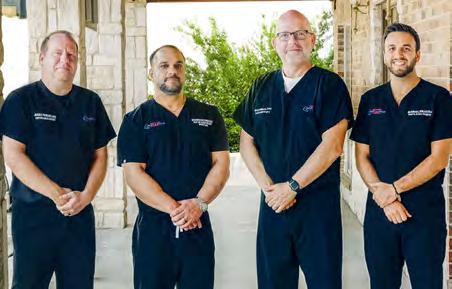

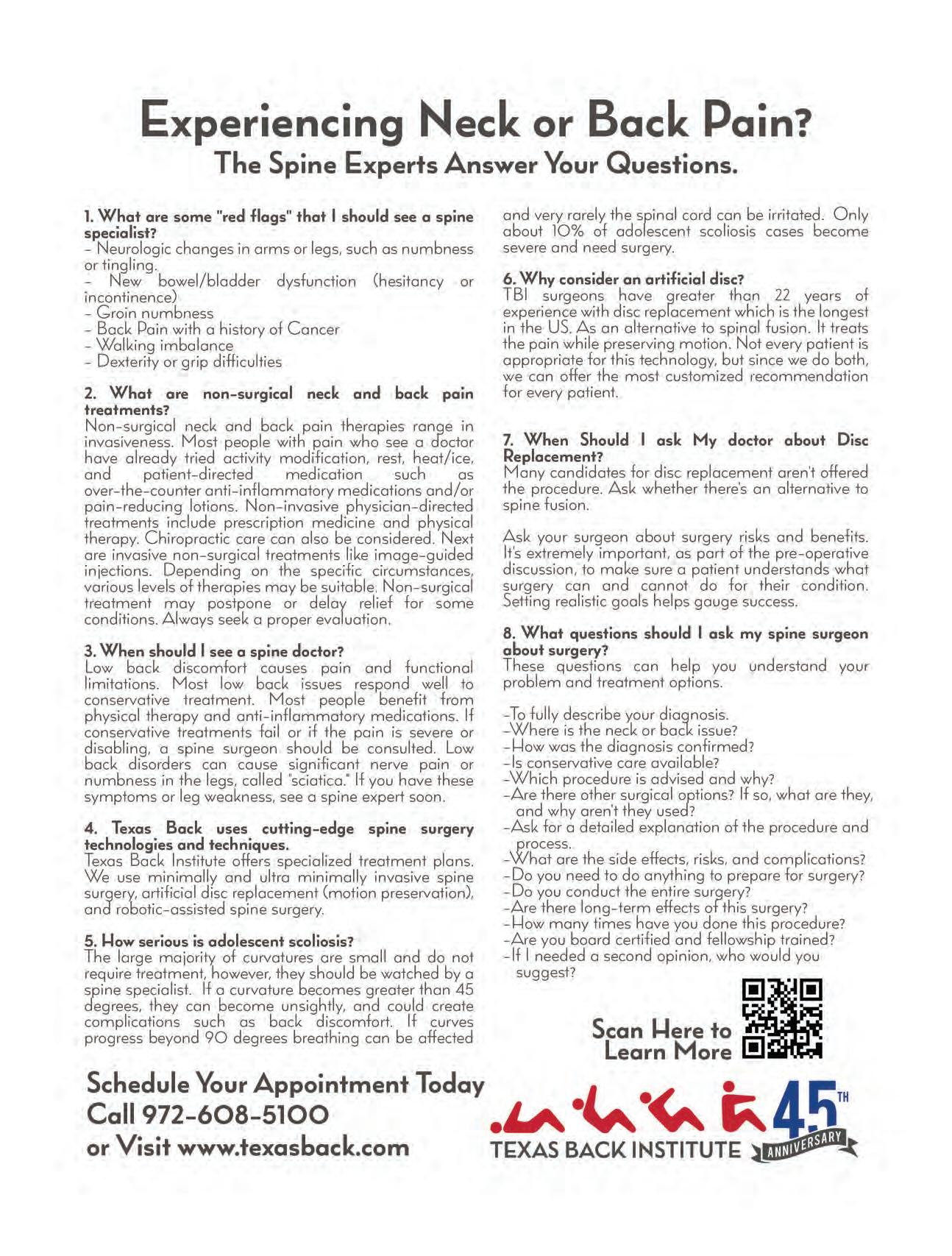

» Staffed by 2 Licensed, Doctors of Audiology
» Hearing Aid Fittings, Maintenance and Repairs
» Invisible Fittings/Open Fittings
» Evaluation Period On All Hearing Aids
» Hearing Evaluations For All Ages
» Wireless/Connectivity Hearing Solutions
» Battery Purchase Programs
» Custom Ear Protection
» Assistive Devices

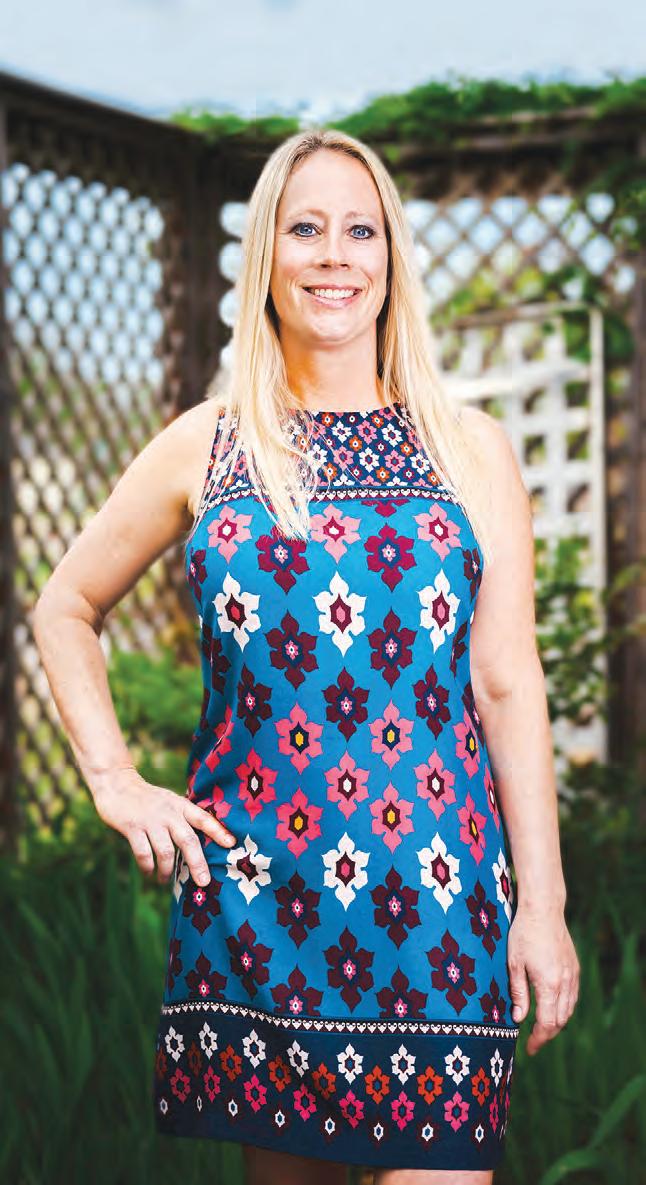
Hearing loss can affect your life in many ways. You may miss out on talks with friends and family. Sometimes hearing problems can make you feel embarrassed, upset, and lonely. It’s easy to withdraw when you can’t follow a conversation. It’s also easy for friends and family to think you are confused, uncaring, or difficult when the problem may be that you just can’t hear well.
As an audiologist, I often get asked in my officby friends and family, especially when fitting a new patient with hearing aids, how to best communicate with them. So, I thought I would share some tips on best communicating with a hearing-impaired person.
Engaging in conversations with individuals who have hearing loss requires a unique approach, one that is rooted in empathy, patience, and understanding. Below are some valuable tips for talking to a person with hearing loss, drawing from my own experiences and insights gained through interaction with the hearing-impaired community.
• Establish eye contact and gain their attention. Ths helps them to pick up on facial expressions.
• Face the person and talk clearly (not while walking away from patient or while looking in cabinets, refrigerators, etc.).
• Speak clearly and at a reasonable speed. Often, slowing down how you speak is more benefical than raising your voice.
• Do not hide your mouth or talk while eating or chewing gum.
• Stand in good lighting.
• Reduce background noises.
• Use facial expressions or gestures to give useful cues.
• Repeat yourself if necessary, using different words.
• Include the hearing-impaired person when talking. Talk with the person, not about the person when you are with others. Ths helps keep the person with hearing loss from feeling alone and excluded.
• With extreme hearing-impaired individuals, use visual aids when possible. Consider using written notes, diagrams, or even smartphone apps that provide real-time transcriptions of spoken words.
• Educate others around you should you know how the hearingimpaired individual can better understand them.

• Be patient; stay positive and relaxed.
• Ask how you can help! Ths gesture alone can help make the individual feel more included in the conversation.
Also important, here are some tips of what the hearing-impaired person can do to improve their communication with hearing aids:
• Let people know that you have difficulty hearing.
• Ask people to face you and to speak slowly and clearly. Ask them to speak without shouting which can just distort the speech signal.
• Pay attention to what is being said and to facial expressions or gestures.
• Let the person talking know if you do not understand.
• Ask people to reword a sentence and try again.
• Turn off ny unnecessary, extraneous noises (such as radio while in car, TV at home, etc.).
• Wear your hearing aids consistently!
Effective communication is a two-way street that requires effort and understanding from all parties involved. When talking to a person with hearing loss, it’s essential to approach the conversation with empathy, patience, and a willingness to adapt. By implementing the tips shared in this article, we can create a more inclusive and supportive environment that empowers individuals with hearing loss to engage fully in the world of communication. As someone who has navigated these challenges with my hearing-impaired patients, I can attest to the transformative power of empathetic communication in building meaningful connections with those who have hearing loss.




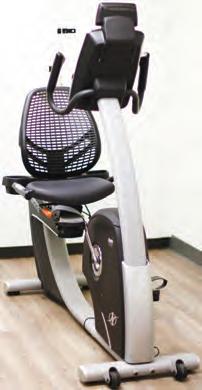


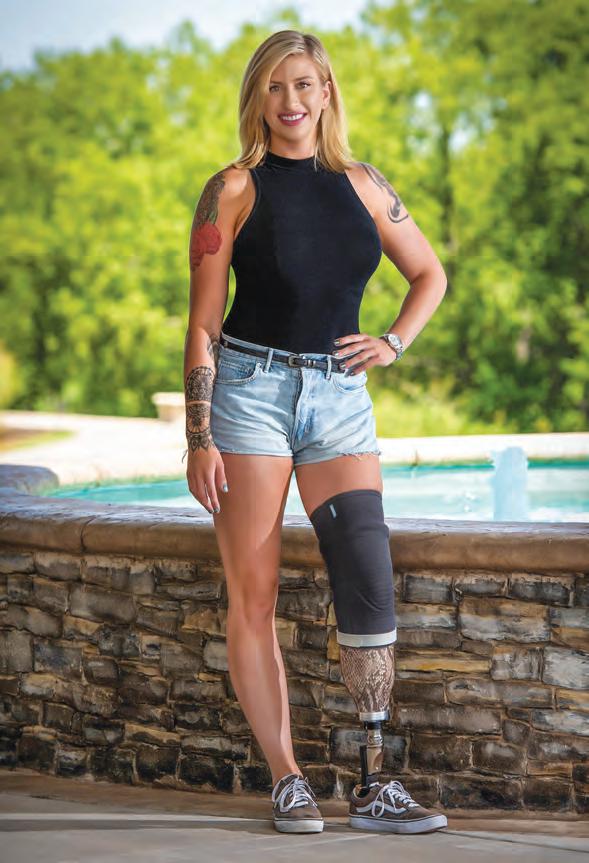
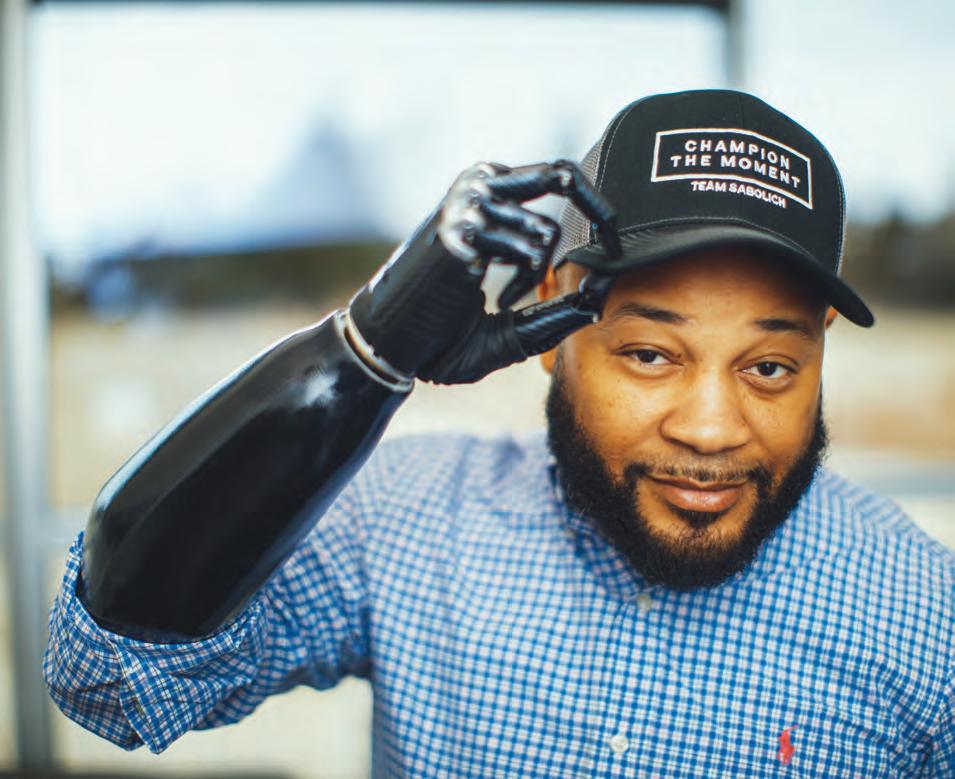




Attorney Deandra M. Grant leads Hamilton Grant’s North, East and Central Texas offices. She is an international speaker on DWI law, science and trial skills. As the author of the annually updated Texas DWI Manual, she is viewed by her peers as being a leader in her field. Deandra understands the science behind alcohol absorption and elimination rates and can use this knowledge to competently defend you.
–DEANDRA GRANT NATIONALLY RECOGNIZED DWI AND CRIMINAL DEFENSE LAW FIRM
Deandra formerly was an assistant district attorney. Her tenure as a prosecutor focused on DWI prosecutions which has given her firsthand knowledge on how to counter the prosecutor’s evidence and strategy. Deandra has spent hundreds of hours in training courses and programs related to DWI defense and has completed the certification course to administer standard field sobriety testing (SFST), the same training course taught to police officers nationwide on how to identify drunk drivers during traffic stops. As a certified SFST Instructor, Deandra has taught the course to other attorneys. She’s also completed the coursework on DWI forensic blood and urine testing.

“I have a masters degree in pharmaceutical science and a graduate certificate in forensic toxicology. I am able to take apart evidence in ways a lot of other attorneys are not able to do. The most important part of my job is being the barrier between the government and my client. Standing between them. Making sure their rights are protected.”

DFW Wound Care Center is a group of wound care specialists in all of the DFW area. They are fellow trained surgeons, and board certified in wound care and reconstructive surgery. All physicians have also completed an intense residency and fellowship in the area of limb salvage, and foot and ankle surgery. When it comes to wound care and limb salvage, DFW Wound Care Center has the knowledge and experience to successfully treat your condition. As a result, patients from all over the country seek to be treated by DFW Wound Care Center.
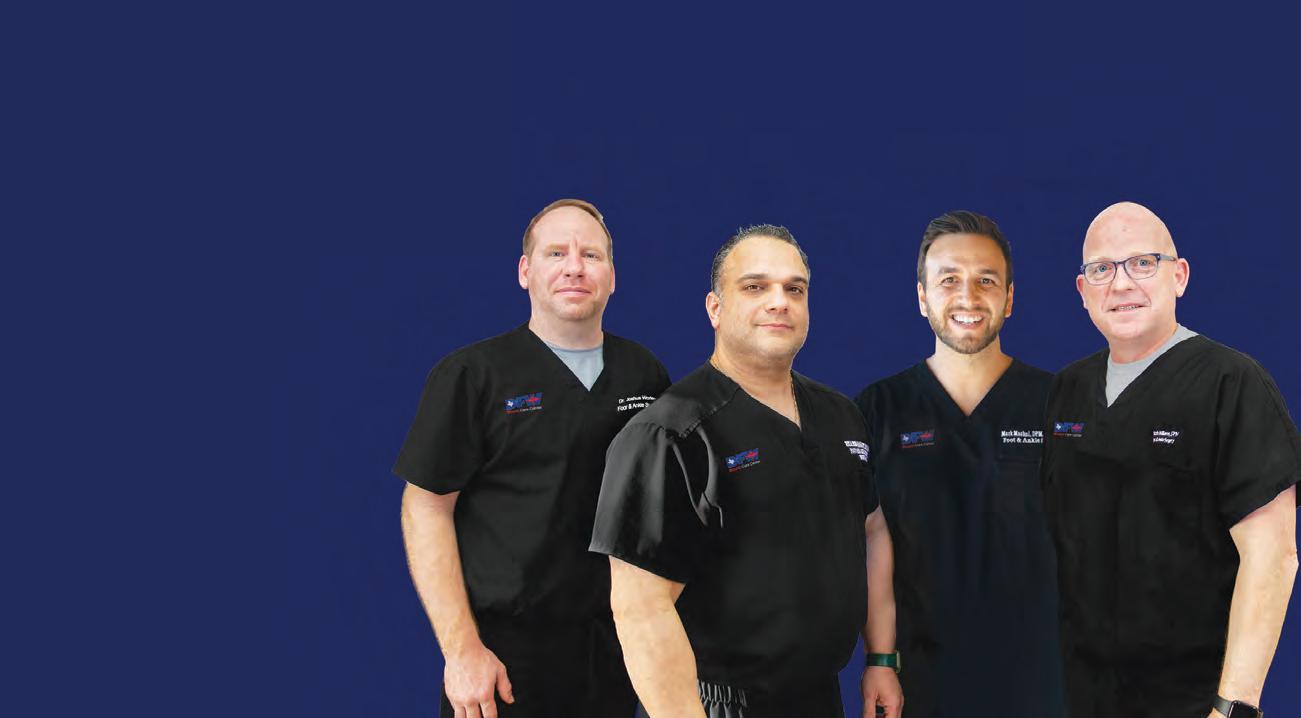
Whether caused by diabetes, infection or disease, any wound that will not heal can be very serious. If you are experiencing a wound or ulcer that will not properly heal, our wound care center can provide a range of expert treatment options best in each case. We offer non-surgical and surgical treatments for:
Diabetic Wounds & Ulcers
Arterial Ulcers
Infected Wounds
Open Wounds
Pressure Ulcers

Vascular Wounds
Acute Wounds
Non-Healing Wounds
Chronic Wounds
Surgical Wounds
Traumatic Wounds
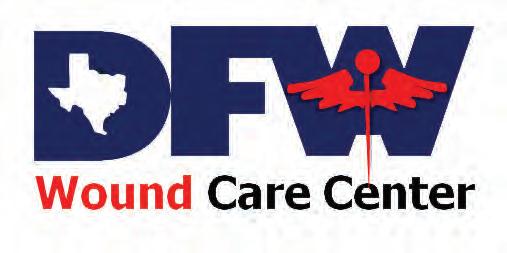
PLANO CLINIC 5804 Coit Road, Ste. 100 Plano, TX 75023
LEWISVILLE CLINIC 502 N. Valley Pkwy., #2 Lewisville, TX 75067
IRVING CLINIC
6161 N. State Hwy. 161, Ste. 320 Irving, TX 75038
DESOTO CLINIC 714 N. Hampton Rd. De Soto, TX 75115

Jelsma Orthopedics & Sports
Richard D. Jelsma, MD
Texas Joint Institute.............................................Suite
➠ Duncan L. McKellar, Jr., MD
➠ Charles E. Toulson, MD, MBA
Helix
➠ Jon Poe, PT, LAT ENT
➠ Hunter Richmond, MD
➠ Peter Selz, MD
➠ McDonald Arnot, DO
➠ Benarji Tegala, MD
➠ Jeremy Urbanczyk, DO
➠ Jermaine G. Clarke, DO, MBA
➠ Joseph Kim, MD Texoma
➠ Ikram Kureshi, MD


Identity theftin this digital age has become an increasingly prevalent and sophisticated crime, leaving countless individuals dealing with the aftermath of stolen personal information. If you fid yourself a victim of identity theft,it’s critical to take immediate and decisive action to minimize the damage and reclaim control over your identity.
Stay calm and act swiftly. Discovering your identity has been stolen can be an overwhelming experience. However, it’s crucial to stay
By JARED TREMBLAYcalm and act swiftly to mitigate potential damages. The faster you respond, the better chance you have of minimizing the impact of identity theft n your fiancial well-being and personal life.
Confirm the theft. How can you tell if you’ve been a victim of identity theft?It’s important to confim that your identity has indeed been stolen by checking your bank and credit card accounts online to see if you notice any unauthorized transactions or unfamiliar accounts.
These could be your red flags indicating identity theft.If you’re receiving emails stating someone has been trying to access your accounts, this could also be a sign. Change those passwords immediately.
Contact your bank and credit card companies. Safeguard who has access to your accounts. For example, change your personal pin numbers (PINs), place stop payments on any missing checks, change your online banking passwords, and if appropriate, open a new checking account. Make sure the bank or card issuer is aware of every account and/or card that is affected, including ATM cards, check/debit cards, and credit cards. Customer service telephone numbers can generally be found on the back of your cards, on the statements, or on their website.
Notifying all your existing account holders immediately to inform them of your victimization may help reduce further fraudulent activities.
Contact the credit bureaus. Contact one of the major credit bureaus—Equifax, Experian, or TransUnion—and request to place a fraud alert on your credit reports. Ths alert signals to creditors that they should take extra precautions to verify your identity before extending credit. By placing an initial fraud alert, you are entitled to a free credit report from each bureau, which you should thoroughly review for any suspicious activities. Once you request this from one of the bureaus, they’ll forward your request to the other two bureaus. A fraud alert may slow down your approval process should you seek new credit, but it helps protect you from fraud. A fraud alert notifies potential credit grantors to verify your identifiation before extending credit in your name.
non-emergency number for your local police department and explain what has happened. They can tell you what information you need to provide. While law enforcement agencies may not always be able to immediately resolve the issue, having an offial record of the incident is crucial for your case. The police report will be helpful when clarifying to creditors that you are a victim of identity theft
Contact the Federal Trade Commission (FTC). File a complaint with the Federal Trade Commission (FTC) through their website IdentityTheft.ov or by calling their Identity TheftHotline at 1-877-ID-THEFT (1-877-438-4338). The FTC provides valuable resources and tools to help you navigate the aftermath of identity theft such as easy-to-print checklists and sample letters that you may need. Also, your complaint contributes to a nationwide database that assists law enforcement agencies in their investigations. To report fraud, scams, or bad business practices, visit ReportFraud.ftc.gov.
Misused Social Security number. If your Social Security card was lost or stolen, you can apply online at ssa.gov for a new one. You’ll still want to report a stolen Social Security number to the FTC. You can review your work history by creating an account a socialsecurity.gov/ myaccount and should you fid any errors, you can contact your local SSA officeo get that cleared up.
Driver’s License and Passport. Don’t forget about these! If they were lost or stolen, you’ll want to reach out to your local DMV branch or State Department and get these replaced immediately, especially if you’re planning on traveling with your passport in the next few weeks.
Close fraudulent accounts. If you discover an account has been fraudulently opened under your name, it is in your best interest to contact those businesses and let them know you were a victim of fraud. Contacting them directly may help you resolve any fraudulent information in your credit report more efficitly.
Check your credit report. By law, you can get a free copy of your credit report each year from the three credit reporting agencies— Equifax, Experian, and TransUnion. Contact one and request a copy of your credit report. In most cases, fraudulent activity can be detected by reviewing the accounts, inquiries, and addresses that appear on a credit report. Review your report carefully for the following items:
• Accounts: If you do not recognize an account and the account is newly opened, that may indicate that a criminal has obtained a line of credit using your identity.
• Inquiries: Review all the inquiries on your credit report in the section titled “Requests viewed by others.” Ths section contains inquiries from creditors that have accessed your credit report to process an application. If you do not recognize the credit grantor accessing your report, that may indicate fraudulent activity.
• Addresses: Review the addresses appearing on your credit report. If you discover an address that you do not recognize, it may indicate that the address was used on a fraudulent application for credit.
Contact law enforcement. As soon as you confim identity theft, report the incident to your local law enforcement agency. Call their
Change your passwords. It may be prudent to change all your online passwords. It can be a painstaking task but often times we don’t know how the thief or thieves got our information. Start with changing your passwords to your email and social media accounts.
Check for stolen mail. Make sure no one has requested an unauthorized address change, title change, PIN change, or ordered new cards or checks to be sent to another address. If a thief has stolen your mail to get credit cards, bank statements, prescreened credit offers, or tax information, or if an identity thief has falsifid change-of-address forms, that’s a crime. Contact your local post officend police.
Document everything. Keep a detailed record of all communications, transactions, and actions taken in response to the identity theft. Ths documentation can serve as crucial evidence in case of legal proceedings or disputes with creditors. Maintain a file that includes copies of police reports, correspondence with fiancial institutions, and any other relevant information.
Vigilance is key. Becoming a victim of identity theftcan be a harrowing experience, but taking swiftand decisive action can help mitigate the damages and restore your sense of control Ongoing monitoring and proactive measures will play a crucial role in preventing further incidents and securing your identity in the long run.

Premier Foot & Ankle specializes in the treatment of all foot and ankle issues patients of all ages may experience. Our dedicated providers are committed to providing patients with quality care and pain relief using cuttingedge technology such as Pulse Activation Treatment to cure heel pain/plantar fasciitis as well as Padnet vascular and Smart Scan nerve testing for diabetics. By for the entire family, we at Premier Foot & Ankle focus on treating both the injured athlete and anyone with foot or ankle injuries.
Premier Foot & Ankle is the leading practice of foot and ankle specialists in the Dallas-Ft. Worth area as evidenced by multiple awards such as the Best of Dallas 2011-2012 and 2015-2020 and the Reader’s Choice Best of Living 2017. As a trusted and dedicated
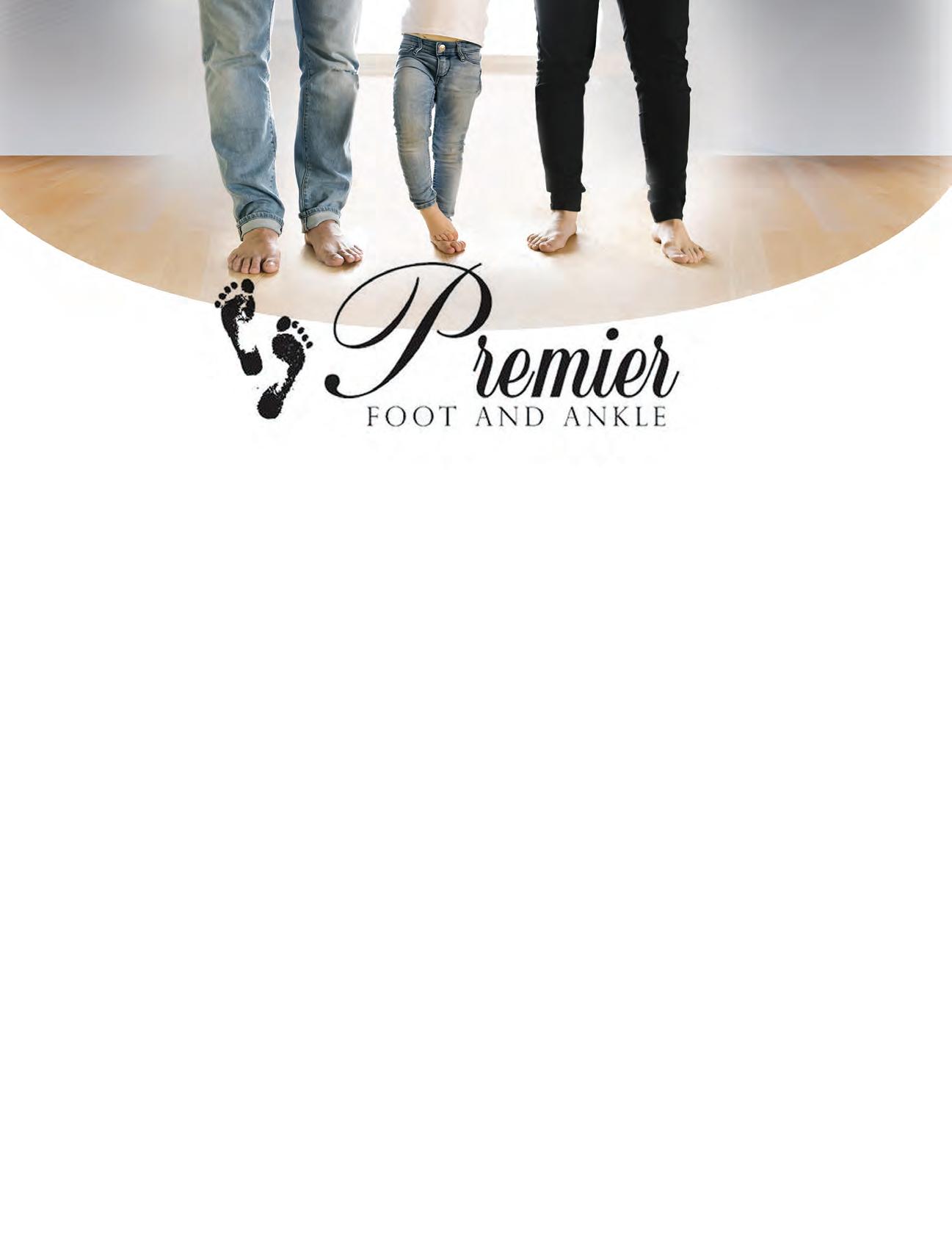

provider, Premier Foot & Ankle is here to help patients alleviate their foot and ankle pain resulting from various foot disorders and injuries such as sports and diabetic foot care.
To move toward your pain-free lifestyle with an individualized comprehensive treatment plan, visit us today at www.premierfoot.com to schedule your appointment!
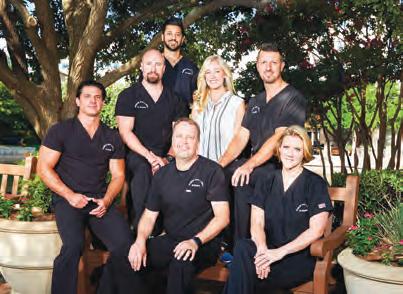

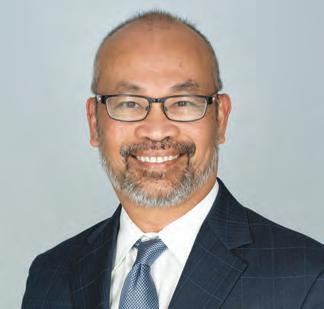
VUDHI SLABISAK, MD OrthopaedicSpineSurgeon


BRUCE MARKMAN, MD OrthopaedicSurgeon&Sports MedicineSpecialist

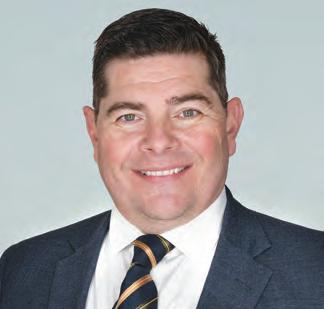
JAMES STANLEY, MD OrthopaedicSpineSurgeon



STEVE HONG, MD Interventional Pain ManagementSpecialist




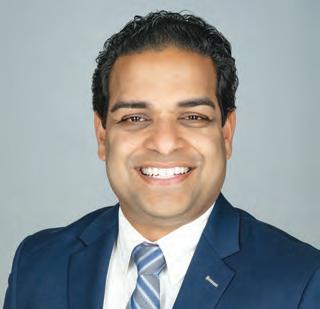

RAHUL BANERJEE, MD OrthopaedicSurgeon
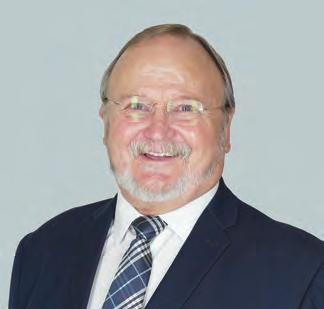
GEOFFREY G. GLIDDEN, MD OrthopaedicSurgeon




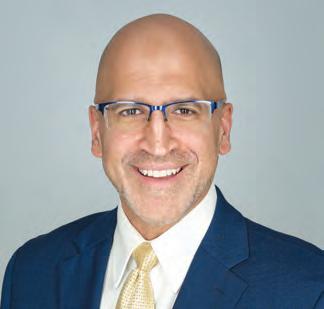




AMIR MALIK, MD Neurosurgeon



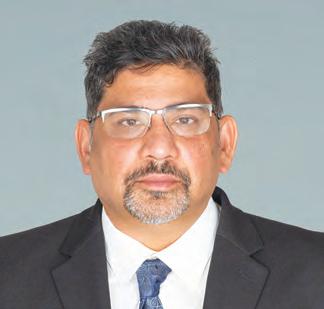

KHAWAJA IKRAM, DO OrthopaedicSurgeon

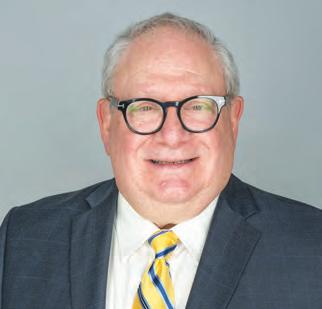
CHARLES MARDER, DPM Podiatrist,Foot&AnkleSurgeon
AMIR AHMED, MD Gastroenterologist

BRIANA HODGSON, PA-C OrthopaedicSurgery PhysicianAssistant
If you’re suffering from pain or an athletic injury, schedule an appointment with your preferred NTOS location for effective, compassionate treatment.


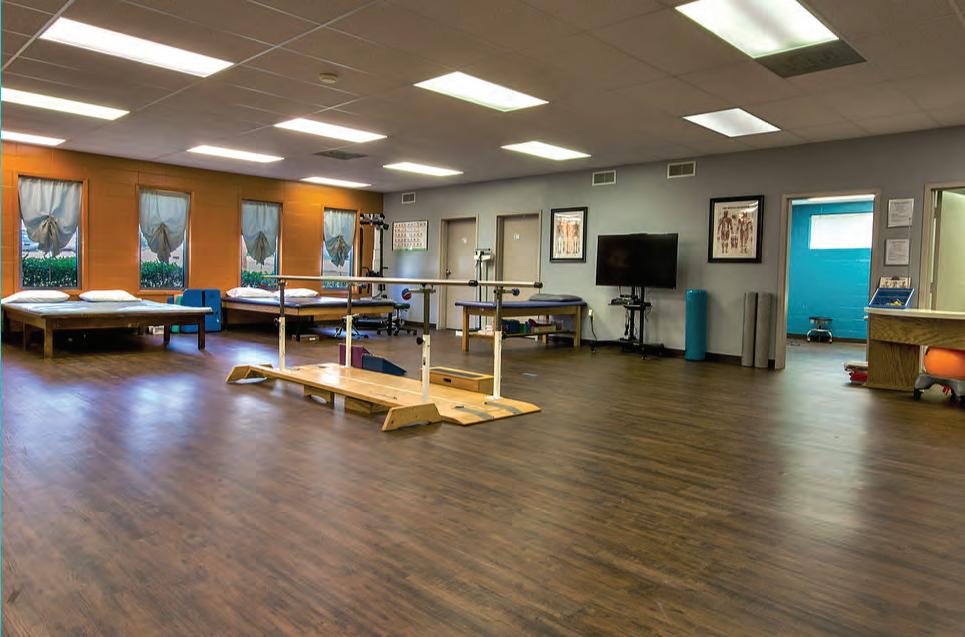


If cataract surgery has been recommended for your eyes, you are not alone. Truth is, we will all develop cataracts, reducing our quality of vision, as we age. Gratefully, cataract surgery procedures have become more advanced and is safe, painless and effective.
If you are thinking about having cataract surgery, you most likely have a lot of questions regarding when you should have it done, what you can expect, and how to prepare for surgery. Read on to see some helpful tips from Dr. Whitman at Key-Whitman.
The complaint we hear most from cataract patients is difficulties with their night vision. They begin to experience a lot of glare, halos and starburst symptoms, especially when driving. We also hear complaints of a haze or fog obstructing their vision and they’ll notice their vision gets blurrier over time.
Before your procedure, our patients undergo a preoperative exam to gather measurements to determine the level of correction needed and review the types of intraocular lens options available. We will also schedule a visit to listen to your heart and lungs as well as review prior anesthesia and surgeries, medical history and medications to ensure they’re physically healthy enough to have cataract surgery.
Key-Whitman also has counselors who will walk our patients through the process, review insurance coverage and make sure the
lens option the patient selects best meets their goals. If there is an eye drop protocol associate with their surgery, the counselor will also go through the drop sequence involved—antibiotics and non-steroidal anti-inflammatories—well in advance of the procedure.
Be sure to have a friend or family member to accompany you to surgery, as you won’t be allowed to drive yourself home due to the twilight sedation.
How Do I Know It’s Time To Have Cataract Surgery?
When your cataracts have worsened to the point where they prevent you from performing day-to-day tasks and interfere with your quality of life, it is time to consider cataract surgery.
Cataracts worsen gradually, and we start to make a lot of accommodations for our vision as we get older. Essentially, we assume how well we see is normal. But if it gets to the point where you’re afraid to drive at night, can’t see well enough to safely take your medication or do household chores, and feel a loss of independence due to failing vision, cataract surgery can allow you to enjoy life again.
In the past, cataract surgery was quite invasive, there were fewer lens options, and healing took much longer. Ths isn’t the case today. The biggest misconceptions people have is that the procedure is painful and complicated. That couldn’t be farther from the truth today.
What Can I Expect Following Cataract Surgery?
Following your surgery, your surgeon will review the procedure with you and answer any questions you may have at that time. Typically, patients leave with a protective eye patch, which will be removed at their follow-up visit the next day. Subsequent follow-up examinations will be scheduled approximately every two weeks until the eye is healed.
Healing post-surgery is also easier for most cataract patients today. “Key-Whitman uses the most advanced technology available, so healing occurs more quickly and with fewer complications. Even better, once the eyes have healed and adjusted, most patients are surprised by the improvement in their vision. They can see clearly again and notice how colors are much more vibrant than before with cataracts. Depending on the type of intraocular lenses patients choose, many become less dependent on glasses,” Dr. Whitman says.
You should also be aware that the surgeon won’t operate on both eyes during the same visit. Surgeries are typically scheduled one to two weeks apart. Ths allows plenty of time for the fist eye to heal and the patient to realize the full extent of correction in that eye.



• Comprehensive Adult Eye Care
• Comprehensive Adult Eye Care
• Cataract Surgery
• Light Adjustable Lens, Synergy™, Symfony®, PanOptix, Vivity® and the Toric IOL
• Symfony®,Crystalens®, Tecnis® PanOptix & the Toric IOL
• Management of Glaucoma & Corneal Disease
• Management of Glaucoma & Corneal Disease
• Eyelid Surgery & Botox®
• Eyelid Surgery & Botox®
• Laser Vision Correction, EVO ICL™
• Laser Vision Correction
Give us a call today 972-769-2020 or Toll-Free 800-442-5330 www.keywhitman.com
Give us a call today 972-769-2020 or Toll-Free 800-442-5330 www.keywhitman.com
Convenient locations to serve you in Dallas, Plano, Richardon, Mesquite, Frisco, Arlington, Rockwall and North Fort Worth. Follow us on (username: keywhitman)
Seven locations to serve you Dallas, Plano, Mesquite, West McKinney, North Arlington, Rockwall and South Arlington.
Follow us on (username: keywhitman)


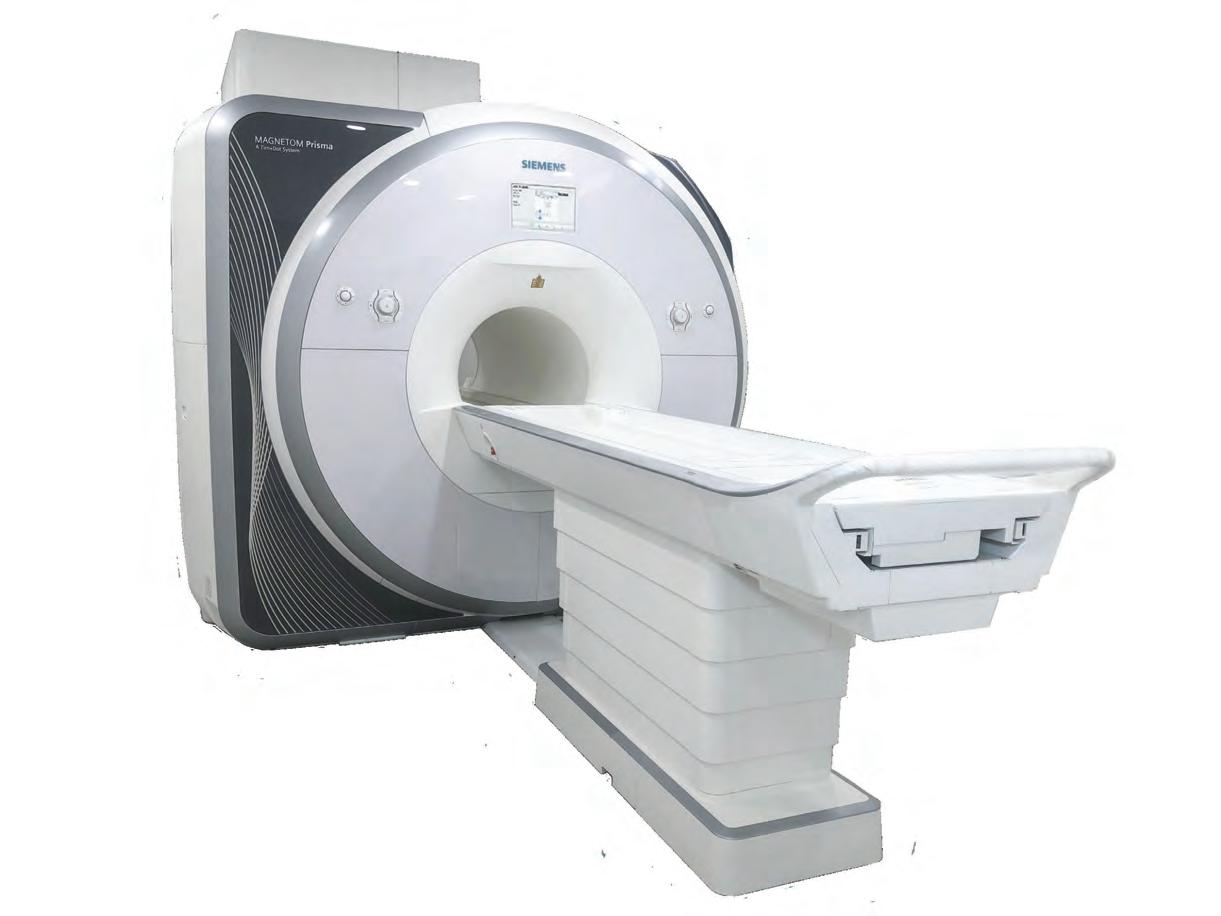
Radiant Imaging is a locally owned and operated diagnostic imaging center that offers their patients full-body scans with optimum patient comfort. Our team aims to make the diagnostic process as comfortable and safe as possible because we recognize the tension and anxiety that are frequently associated with it.
Radiant Imaging’s cutting-edge technology provides our patients the most reliable results possible. Our imaging center offers:
• Arthrograms
• Bone Density Scans (DEXA)
• Computed Tomography (CT) Scans
• PET/CT Combined Imaging
• Digital X-Rays
• Magnetic Resonance Imaging (MRI)
• Myelograms







